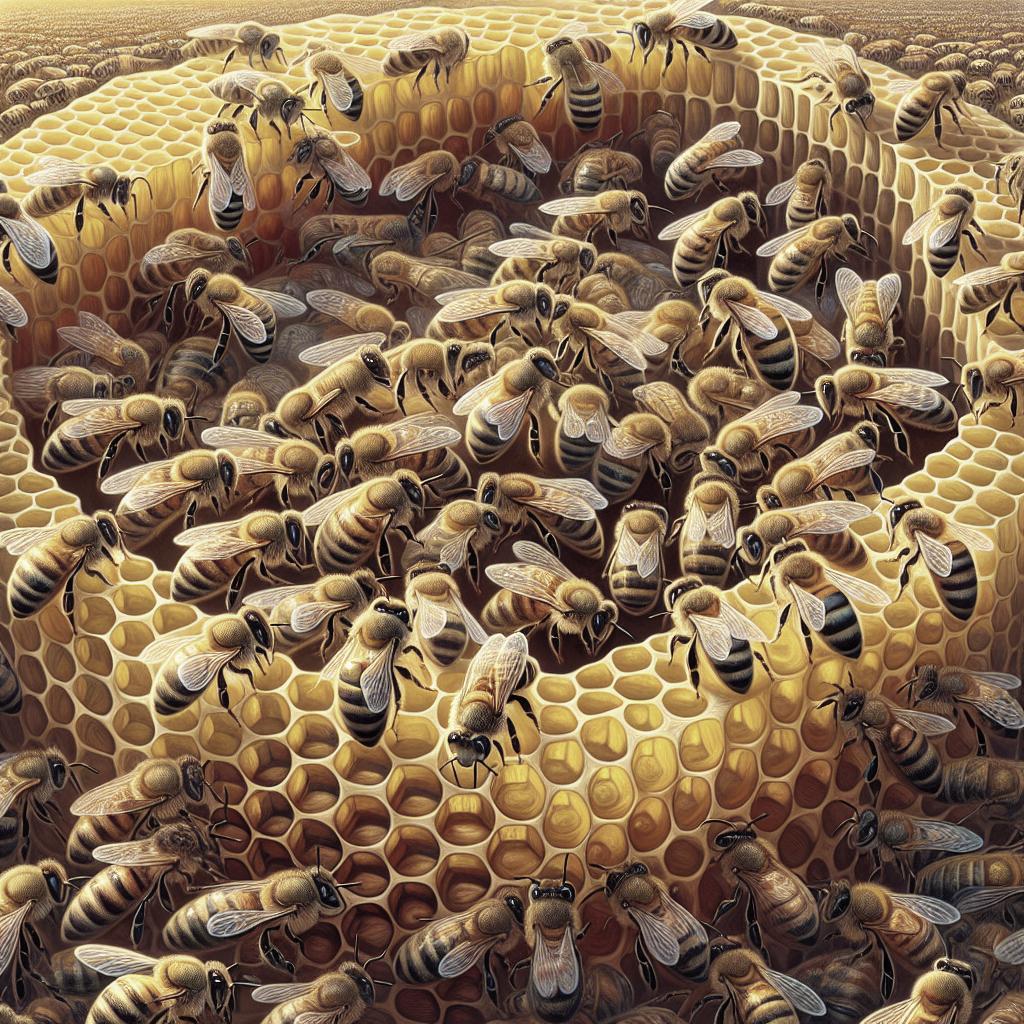How Do Bees Communicate Within the Hive?
Bees are among the most fascinating creatures in the natural world, known for their structured social systems and incredible ability to communicate. Within the hive, bees use a variety of methods to relay critical information necessary for their survival. This blog post explores the roles of different types of bees – queen, drone, and worker – and delves into the diverse communication methods they use, such as dance language, touch, odor cues, and vibrations. We will also take a look at how these communication strategies not only aid in the survival of the hive but also offer insights for human interactions and technology advancements. Finally, we will summarize the intricate world of bee communication and consider future prospects inspired by their complex signaling mechanisms.
Bees’ Roles in the Hive
Queen Bees
In a beehive, the queen holds a central role as both the reproductive leader and symbolic head of the colony. Her primary duty is to lay eggs, ensuring the continuation and expansion of the bee population. A queen’s ability to produce eggs is directly linked to her physical structure and the communication signals she sends out to the hive. Pheromones play a crucial role in regulating hive functions and maintaining social harmony. These chemical messages help establish her dominance, signal her reproductive status, and even influence the behavior of other bees.
Beyond reproduction, the queen’s pheromones serve as communicative tools, affecting how worker bees perform their duties. By emitting specific pheromones, the queen can prompt activities such as food gathering, nursing of larvae, or hive cleaning, thereby ensuring the hive operates efficiently. In this manner, the queen bee wields significant control over the hive’s internal communication and function.
Drone Bees
Drone bees, or male bees, have a specialized role within the hive — their sole purpose is to mate with a new queen. Lacking stingers and unable to collect pollen, drones are entirely dependent on the worker bees for nourishment and protection. Their communication with other bees is limited, primarily centered around their flight activities intended for mating purposes.
During the mating season, drones communicate through pheromones and physical presence within the hive, alerting other drones to opportunities. Their biological makeup and behaviors fine-tuned for reproductive success emphasize the critical, albeit seasonal, role they play in bee society.
Worker Bees
Worker bees are the hive’s backbone, performing a variety of tasks essential to the colony’s survival. From foraging for nectar and pollen to taking care of young bees, worker bees are the most versatile communicators within the hive. Their communication repertoire is extensive, employing multiple modalities including scent, sound, and touch to coordinate complex activities.
Through intricate dance patterns, pheromonal signals, and buzzing tones, worker bees convey information regarding food sources, hive threats, and necessary tasks. Their adaptive communication skills ensure a dynamic response to changing environmental conditions, proving essential for the hive’s sustainability and prosperity.
How Bees See Flowers
Touch
Touch plays a vital role in bee communication, especially in the densely populated environment of a hive. Through antennal contacts and body vibrations, bees are able to share information quickly and efficiently. When a bee discovers a new food source, it uses its body to make contact with other bees, passing along the message in a tactile form.
This physical mode of communication is complemented by their sense of touch when interacting with flowers. The tiny hairs on bees’ bodies help them detect the electrical charges of blooms. Once they are back in the hive, the tactile feedback from these electromagnetic interactions helps the bees decide how to efficiently relay the location and quality of floral resources to their peers.
Dance Language
Round Dance
The round dance is a fascinating method by which bees communicate the proximity of food sources. When a worker bee finds a food source close to the hive, it returns and performs a round dance on the honeycomb. This dance conveys the message that the food is nearby, encouraging other worker bees to begin searching for it without given specific direction.
Through this rhythmic, circular movement, other bees become excited and ready to embark on a forage mission in the immediate vicinity. The round dance thus serves as a motivational cue, stimulating the colony to efficiently exploit nearby resources.
Waggle Dance
The waggle dance, an extraordinary form of bee communication, conveys precise information about the direction and distance of nectar sources located further from the hive. Upon returning from a fruitful forage, a bee performs a waggle dance on the honeycomb, instructing other workers on exactly where to go. The dance’s duration and angle with respect to the hive and the sun encode the distance and direction to the food source.
With this sophisticated dance, the hive’s collective knowledge and foraging efficiency improve significantly. By accurately sharing important foraging details, the waggle dance helps maintain the hive’s sustenance and vitality with incredible effectiveness.
Odor Cues or Pheromones
Pheromones are chemical signals that play an integral role in bee communication, allowing for intricate information transfer within the hive. Worker bees emit specific pheromones to alert others to food sources or potential dangers, such as intruders or enemies. These scents trigger immediate and coordinated actions by the hive, exemplifying an acute olfactory communication system.
In addition to alarm signals, pheromones also help regulate social behaviors and breeding processes within the hive. For instance, the queen’s pheromones maintain social order and suppress the worker bees’ reproductive capabilities, ensuring the hive remains focused on collective welfare. Thus, odor cues form the chemical backbone of hive communication.
Vibration and Sound
Vibration and sound are vital components of bee communication, particularly when visual cues are limited. Bees utilize their wings and body movements to produce specific vibrations that convey messages. For example, when a worker bee returns to the hive with news of a new food source, it may generate a “buzz-run” signal — an intense vibration alerting others to an important event.
These vibrational signals not only convey news about food but can also coordinate hive activities, indicate queenless situations, and even manage temperature regulation within the hive. By translating vibration and sound into comprehensible messages, bees showcase a multi-modal communication strategy vital for their social structure.
Talking to People
Understanding bee communication presents incredible prospects for technological advancements and environmental conservation. Researchers have studied bee dance language and pheromone use to improve robotic swarm technology, drawing inspiration from the efficiency and effectiveness of bee signaling systems.
Moreover, preserving bee populations becomes crucial as we gain insights into their complex communication mechanisms. By maintaining healthy environments for bees, humanity can ensure the continued pollination of crops and natural plant species, highlighting bees’ vital role in Earth’s ecosystem.
Future Prospects
| Aspect | Description |
|---|---|
| Queen Bees’ Role | Central leadership role and reproductive control via pheromones. |
| Drone Bees’ Role | Mating-focused with limited communicative functions. |
| Worker Bees’ Role | Versatile tasks facilitated by advanced communication methods. |
| Dance Language | Round and waggle dances to indicate resource location and quality. |
| Pheromones | Chemical signals for social regulation and environmental awareness. |
| Vibration and Sound | Utilized for intra-hive signaling and activity coordination. |
| Human Interaction | Inspiration for technology and essential for environmental sustainability. |


